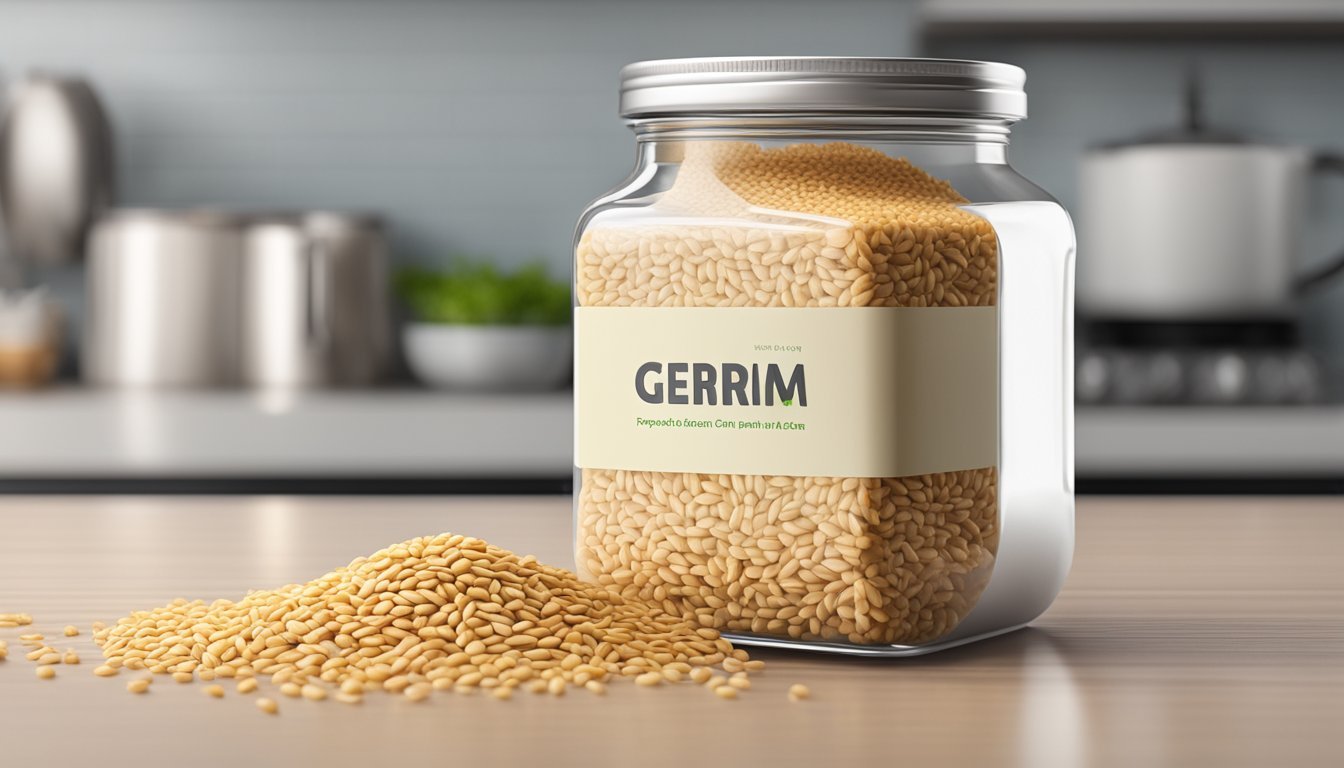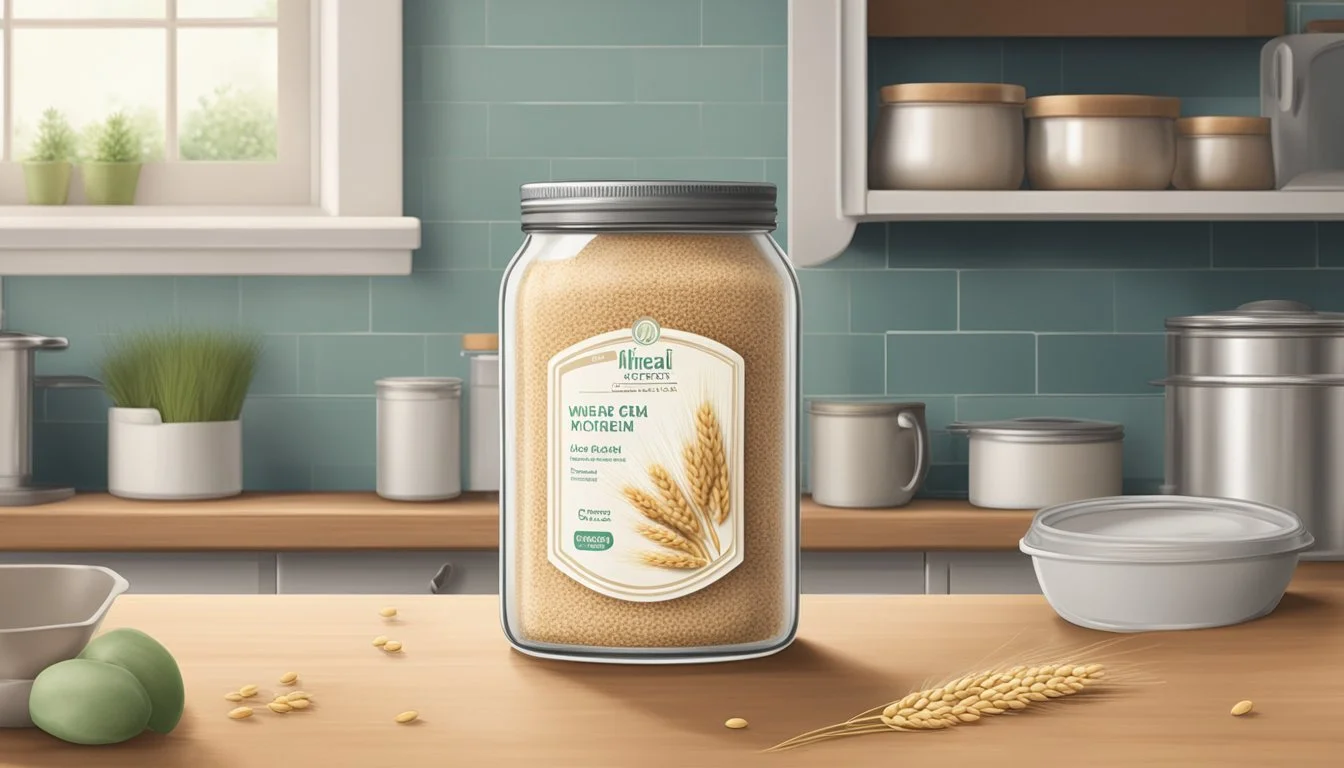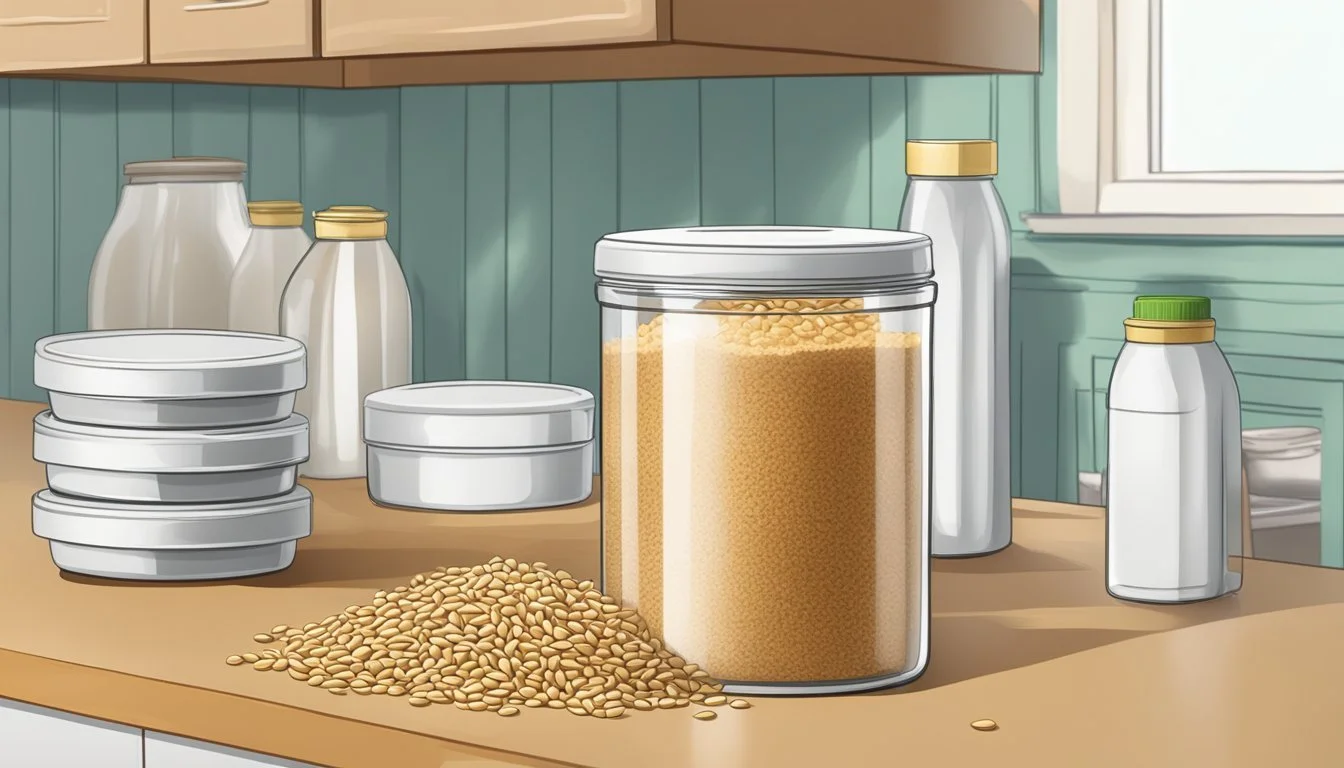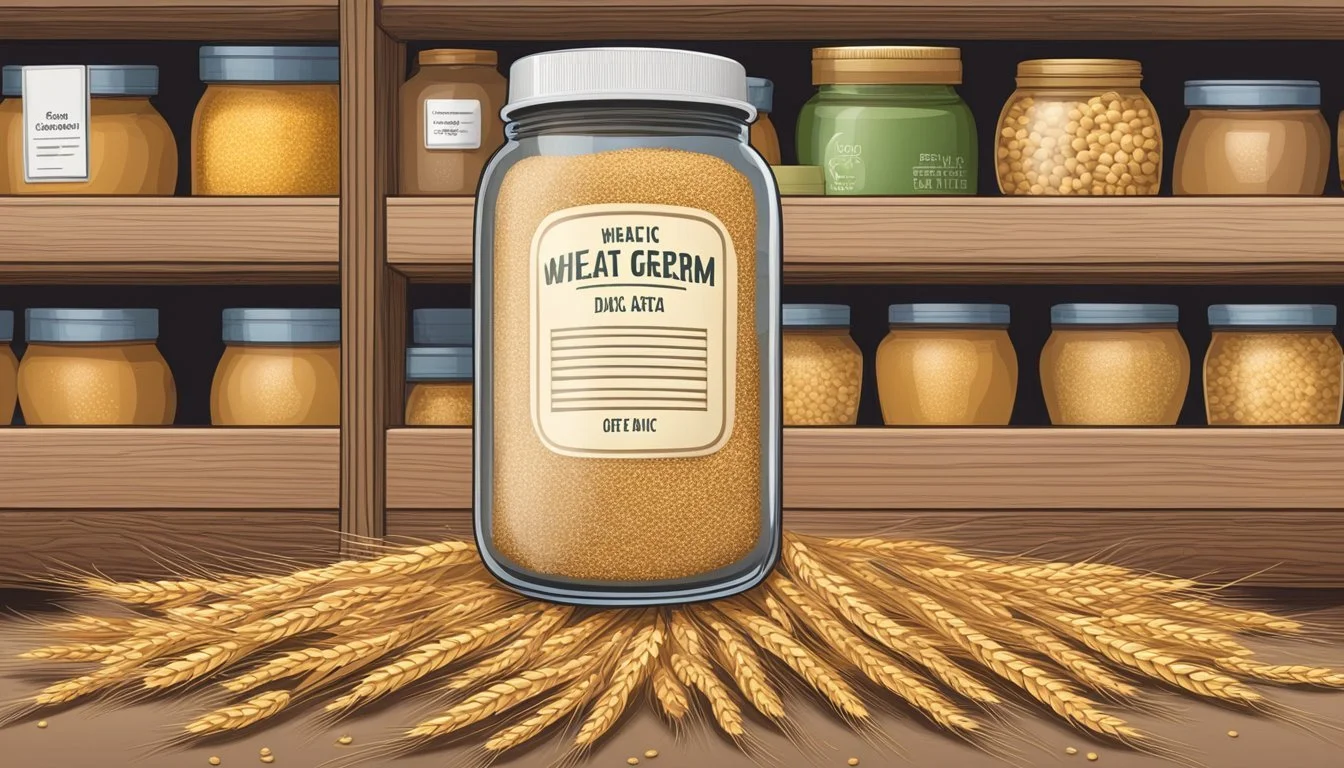Does Wheat Germ Go Bad?
Freshness Tips and Storage Advice
Wheat germ, a byproduct of wheat milling, is packed with nutrients such as protein, fiber, vitamins, and minerals. As a nutrient-rich ingredient, it offers numerous health benefits, from supporting heart health to providing essential vitamins like thiamin, niacin, and folate.
Yes, wheat germ does expire. Even though it contains beneficial nutrients, its shelf life is limited, and its quality can deteriorate over time. Proper storage is crucial to maintain its freshness and extend its usability.
Many people enjoy wheat germ as a topping for yogurt or oatmeal, or as an ingredient in baked goods. To ensure you are getting the most out of this nutrient-dense food, it's important to know how to store it properly and recognize signs that it might have gone bad.
What Is Wheat Germ?
Wheat germ is a nutrient-dense part of the wheat kernel, rich in essential vitamins, minerals, and healthy fats. It is known for its numerous health benefits, as well as its versatile culinary uses.
Nutritional Profile
Wheat germ is packed with vitamins and minerals. It contains B vitamins such as B1, B6, and folic acid, vitamin E, and essential minerals like phosphorus, zinc, iron, potassium, and magnesium.
A significant amount of fiber is also present, helping in digestion and regulating blood sugar. Additionally, wheat germ offers a good amount of plant-based protein and healthy fats, making it a substantial addition to any diet.
Health Benefits
Incorporating wheat germ into the diet can provide multiple health benefits due to its nutrient profile. The fiber content aids in digestive health and weight management by promoting satiety. Antioxidants like vitamin E present in wheat germ help combat oxidative stress, potentially lowering the risk of chronic diseases.
The presence of B vitamins supports energy metabolism, while minerals such as iron and magnesium are vital for various bodily functions, including maintaining strong bones and supporting the immune system.
Culinary Uses
Wheat germ has a nutty, slightly sweet flavor and can be added to various dishes. It is often used to enhance the nutritional value of breakfast cereals, yogurt, smoothies, and even baked goods like bread and muffins. It's also a popular topping for fruit pies, ice cream, and hot or cold cereal.
For those looking to add more nutrients to their diet, wheat germ can be sprinkled on salads or mixed into granolas and cornbread. Its easy incorporation into both sweet and savory dishes makes it a versatile ingredient in the kitchen.
Identifying Spoilage in Wheat Germ
Wheat germ, like other perishable foods, can go bad over time. Recognizing spoilage involves examining its taste, smell, and appearance, as well as understanding the potential health risks associated with consuming spoiled wheat germ.
Taste and Smell Characteristics
Spoiled wheat germ often emits a musty or rancid odor. Fresh wheat germ typically has a nutty aroma, so any deviation from this is a red flag. The taste can also change, developing a sour or bitter flavor. If the wheat germ smells or tastes off, it’s a clear indicator that it is no longer safe to consume.
Visual Signs
Visual inspection is crucial for identifying spoilage. Look for changes in color or texture. Fresh wheat germ should be light tan. Discolorations, such as dark spots or an uneven color, signal spoilage. Additionally, watch for signs of mold, which can appear as green or black spots. Any visual anomalies suggest that the wheat germ is likely spoiled.
Health Risks of Consuming Spoiled Wheat Germ
Eating spoiled wheat germ poses health risks. Rancid wheat germ can contain harmful bacteria or toxins. Symptoms from consuming spoiled food include stomach pains, nausea, and diarrhea. It is vital to discard wheat germ that shows any signs of spoilage to avoid these health issues. Always choose freshness for safety and quality.
Proper Storage for Wheat Germ
Proper storage practices are essential to extend the shelf life of wheat germ and maintain its nutritional value. Key considerations include temperature control, moisture prevention, and appropriate packaging.
At Room Temperature
Storing wheat germ at room temperature requires special attention to keep it fresh and safe. It should be kept in a cool, dry, and dark place like a pantry.
Temperature control is crucial. Exposure to heat can accelerate the oxidation process, making the wheat germ go rancid more quickly.
An airtight container is essential to prevent moisture and contaminants from getting in. Opaque containers are preferred to minimize light exposure, which can degrade the quality over time.
Refrigeration and Freezing
For longer shelf life, storing wheat germ in the refrigerator or freezer is recommended. Refrigeration can significantly slow down the oxidation process, extending freshness up to six months.
Use an airtight container to protect against moisture and odors from other foods.
Freezing wheat germ is even more effective for long-term storage, potentially keeping it usable for up to a year. Label containers with dates to keep track of freshness.
Packaging and Containers
Proper packaging is vital for maintaining the quality of wheat germ. Always use airtight containers to prevent moisture and oxygen ingress, both of which can cause spoilage.
Plastic, glass, or metal containers are suitable if they have a tight seal. Vacuum-sealed bags are optimal for longer storage durations.
Avoid storing wheat germ in its original packaging if it’s not resealable, as this does not protect against oxidation and moisture effectively.
Keeping these storage guidelines ensures that wheat germ remains fresh, nutritious, and safe to consume.
Shelf Life and Expiration
Wheat germ, like other food products, possesses a limited shelf life. Knowing the factors that affect this, how to read expiration dates, and methods to extend shelf life can help maintain its quality.
Factors Affecting Shelf Life
The shelf life of wheat germ is influenced by several factors. Storage conditions are critical; keeping it in a cool, dark place can prolong freshness.
Exposure to heat and moisture can cause it to spoil faster. Once opened, it is more susceptible to air and humidity, which can lead to it becoming stale or rancid.
Packaging also plays a role. Products in airtight, sealed containers generally last longer than those in less protective packaging. Unopened wheat germ has a longer shelf life compared to opened packages.
How to Read Expiration Dates
Expiration dates are typically printed on the packaging. These dates indicate the period during which the product is expected to remain at peak quality.
A commonly seen label might include "Best By" or "Use By" dates. It’s important to note that these dates are not an absolute indicator of safety but rather a guideline.
Once the expiration date has passed, the wheat germ might still be safe to consume, but its nutritional quality and taste may have diminished significantly.
Extending Shelf Life
To extend the shelf life of wheat germ, proper storage techniques are crucial. Refrigeration helps keep it fresh longer, especially after the package has been opened.
Freezing is another effective method. Place the wheat germ in a moisture-proof, airtight container before freezing to prevent freezer burn and condensation.
Using smaller, airtight containers can help minimize the exposure to air each time you use it. Always check the label for specific storage instructions provided by the manufacturer to ensure you are following best practices.
Incorporating Wheat Germ into Your Diet
Wheat germ can be a versatile addition to daily eating habits, boosting nutritional content and flavor. It seamlessly integrates into breakfast items, snacks, smoothies, and various meals.
Breakfast Ideas
Wheat germ easily enhances breakfast options. Sprinkle it over cereals or oatmeal to increase fiber and nutrient intake. It blends well with yogurt and fresh fruit, creating a nutritious parfait. Adding a couple of tablespoons to pancake or waffle batter not only improves texture but also imparts a nutty flavor. Those making smoothies can toss in a spoonful to enhance the protein and vitamin content.
Snacks and Smoothies
For a nutritious snack, wheat germ can be combined with nut butter and spread on whole grain toast. It also makes an excellent addition to homemade energy bars. When preparing smoothies, a tablespoon of wheat germ blends smoothly without altering the taste, while adding essential vitamins and minerals. Mix it with flaxseed to enrich the fiber content of your drink. This makes it an ideal ingredient for pre-workout snacks or post-exercise recovery shakes.
Cooking and Baking
Wheat germ proves useful in various cooking and baking recipes. It can act as a breadcrumb substitute in meatloaf, meatballs, or as a crunchy topping for casseroles. In baking, add it to bread, muffins, or cookie dough to enhance the fiber and nutrient profile. It pairs well with whole grain flour for a healthier baking substitute. When baking, replacing part of the flour with wheat germ offers a richer texture and flavor, making the finished product more wholesome.
Health Impact of Wheat Germ
Wheat germ offers numerous health benefits due to its rich nutrient profile, which includes essential vitamins, minerals, and antioxidants. This section will explore how wheat germ supports heart health, aids digestive processes, and enhances bone and immune function.
Cardiovascular Benefits
Wheat germ is rich in B vitamins such as folate and thiamin, which play a crucial role in heart health. These vitamins help lower blood cholesterol levels by improving lipid profiles, potentially reducing the risk of heart disease. The presence of polyunsaturated fats, including omega-3 fatty acids, further supports cardiovascular function by improving blood flow and reducing inflammation in blood vessels.
The high levels of vitamin E in wheat germ act as antioxidants, combating free radicals and preventing oxidative stress, which can damage the heart. Additionally, potassium in wheat germ supports proper heart function by maintaining healthy blood pressure levels.
Digestive Health
Wheat germ contains dietary fiber, which promotes healthy bowel movements and reduces digestive discomfort. Adequate fiber intake helps regulate the digestive system, preventing constipation and supporting a balanced gut microbiome. This can lead to improved nutrient absorption and overall digestive efficiency.
Those who do not have celiac disease can benefit from the prebiotic properties of wheat germ, which nourish beneficial gut bacteria. The presence of plant-based protein in wheat germ also aids in the repair and maintenance of the digestive tract, ensuring it operates smoothly.
Bone and Immune Support
Wheat germ is an excellent source of minerals such as magnesium, phosphorus, and calcium, which are essential for maintaining strong bones. Phosphorus and calcium work together to enhance bone density and prevent conditions such as osteoporosis. Magnesium helps with the absorption of these minerals, ensuring they are utilized effectively within the body.
The selenium in wheat germ plays a vital role in supporting the immune system. This mineral helps fight off infections and reduce the risk of chronic diseases, including cancer. By boosting the immune response, selenium ensures the body can efficiently combat free radicals and other harmful agents.
Wheat germ also contains zinc, another crucial mineral that supports immune function and aids in cellular repair and growth. This ensures that the body's defense mechanisms are functioning at their peak, contributing to overall well-being and health.
Understanding Wheat Germ Derivatives
Wheat germ derivatives, especially wheat germ oil, offer a range of benefits from health to skincare. These derivatives are packed with key nutrients such as antioxidants, vitamin E, and selenium, making them highly valued.
Wheat Germ Oil Benefits
Wheat germ oil is extracted from the germ of the wheat kernel. It is rich in vitamin E, a powerful antioxidant that helps combat free radicals in the body. Regular consumption can support heart health by maintaining healthy cholesterol levels. The oil contains essential fatty acids, which are crucial for brain function and skin health. Additionally, the presence of selenium supports immune function and may play a role in cancer prevention.
Uses in Beauty and Skincare
Wheat germ oil is widely used in beauty and skincare products due to its moisturizing properties. It is excellent for dry or aging skin, as it helps retain moisture and elasticity. The vitamin E in the oil also promotes healing and can reduce the appearance of scars and stretch marks. Furthermore, its antioxidant properties protect the skin from environmental damage, making it a valuable ingredient in creams, lotions, and serums.
Frequently Asked Questions about Wheat Germ and Wheat Germ Products
Does Wheat Germ Expire?
Yes, wheat germ does expire. It has a limited shelf life due to its high oil content, which can turn rancid over time. Properly stored wheat germ can last longer, but it is advisable to check expiration dates and storage guidelines.
How Should Wheat Germ Be Stored?
Wheat germ should be stored in a cool, dry place. Once opened, it is best kept in the refrigerator in an airtight container to extend its freshness. Avoid exposure to heat and moisture.
What Are the Nutritional Benefits of Wheat Germ?
Wheat germ is rich in B vitamins like folate, thiamin, and B6, as well as nutrients such as vitamin E, magnesium, zinc, and selenium. It also contains polyunsaturated fats, protein, and dietary fiber.
Does Wheat Germ Have Gluten?
Yes, wheat germ contains gluten. It is a byproduct of the wheat milling process, making it unsuitable for those with celiac disease or gluten sensitivity.
How Can You Incorporate Wheat Germ into Your Diet?
Wheat germ can be added to smoothies, yogurt, oatmeal, and baked goods. It can also be sprinkled on salads or used as a breading for meats and vegetables.
What is the Serving Size of Wheat Germ?
A typical serving size is about 2 tablespoons. This amount provides approximately 57 calories and 4.3 grams of protein, making it a nutrient-dense addition to various foods.
Can You Use Wheat Germ in Baking?
Yes, wheat germ can be used in baking. It can replace a portion of flour in recipes for bread, muffins, and cookies, adding a nutty flavor and nutritional boost.
Is Wheat Germ Safe for Everyone?
Most people can safely consume wheat germ. However, those with wheat allergies or gluten intolerance should avoid it. Always consult with a healthcare provider if you have dietary restrictions.
Does Wheat Germ Help in Energy Boost?
Wheat germ provides essential vitamins and minerals that can help support energy levels. The B vitamins in wheat germ play a role in converting food into energy, making it a useful addition to a balanced diet.









